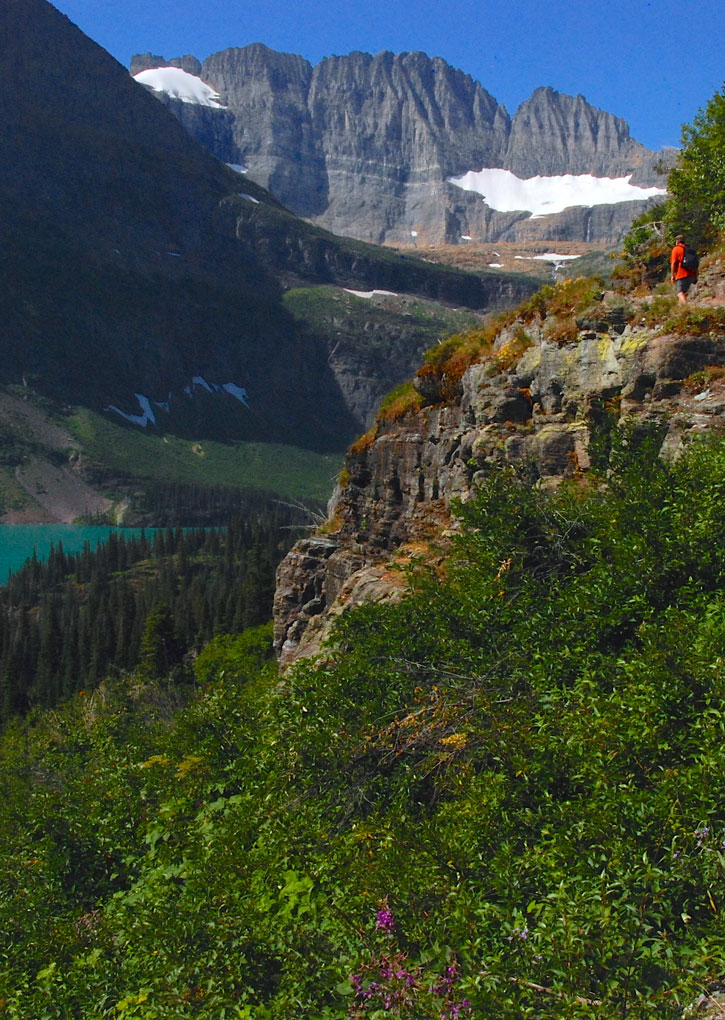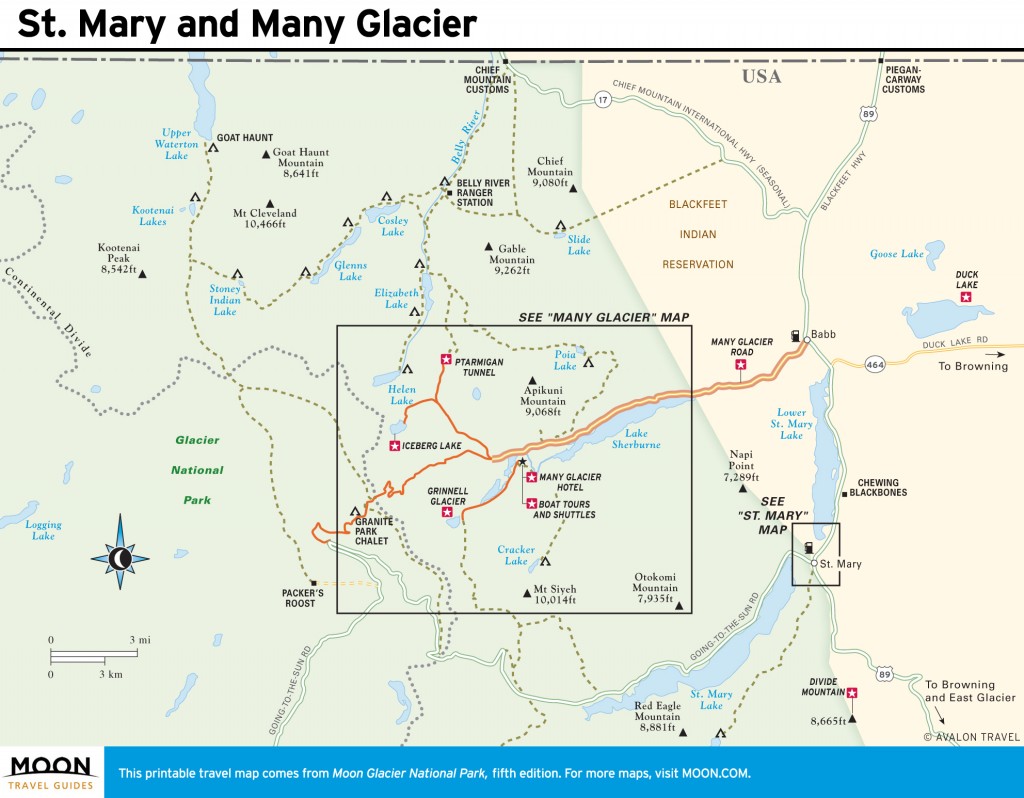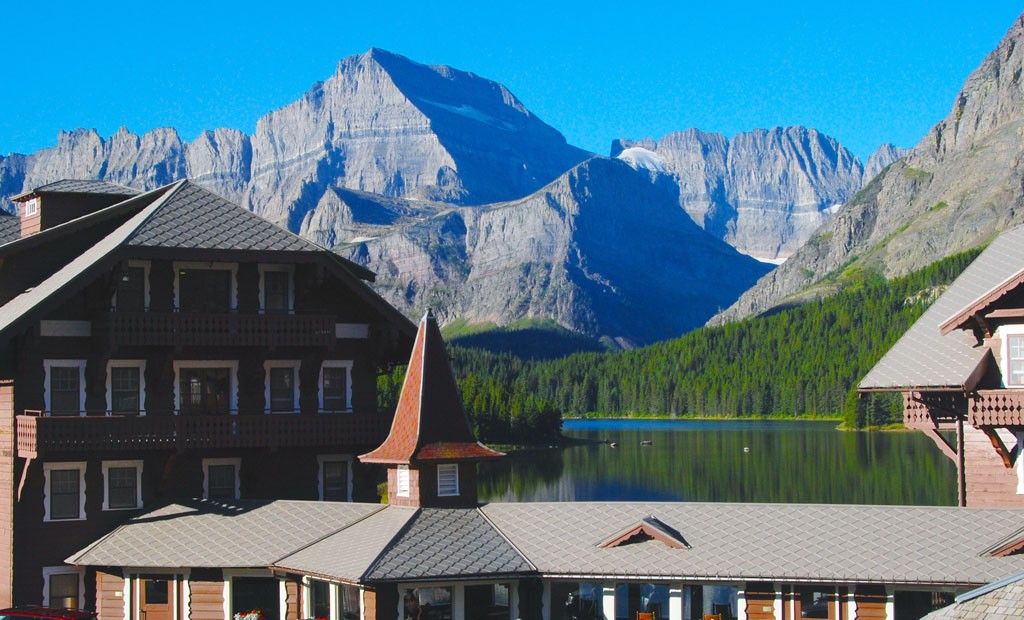
Grinnell Glacier Trail in Many Glacier. Photo © Becky Lomax.
While St. Mary is the eastern portal to Glacier’s famed Going-to-the-Sun Road, Many Glacier is a setting of dreams: distinctive peaks, idyllic lakes, pastoral meadows. The morning sunrise gleams gold across a rampart of peaks speckled with the most accessible glaciers in the park. Loons call across glassy lakes. Grizzly bears forage on hillsides, clawing at the ground for glacier lily bulbs. By evening, when the trails vacate, the sunset paints royal hues above the Continental Divide. Dark descends, with a multitude of stars. And if you’re lucky, the northern lights dance across the sky.
Glacier’s eastern ecosystem sprawls across national park lands and the Blackfeet Reservation, divided by an artificially straight border. Bears and elk know no boundaries, and sometimes neither do cattle, ranging astray inside Glacier.

St. Mary and Many Glacier
Bordering the park’s eastern boundary are 1.5 million acres of Blackfeet Nation lands. The boundary slices across the summits of Chief Mountain, Napi Point, and Divide Mountain, crossing the lower end of Sherburne Reservoir and sliding between the two St. Mary Lakes. Permits are required for camping, fishing, hiking, and boating recreation on the reservation.
St. Mary is the eastern portal to Going-to-the-Sun Road. At the junction of the Sun Road and the Blackfeet Highway (U.S. 89), the town is clustered at the park boundary. Only the visitors center and St. Mary Campground are within the park; the town, restaurants, grocery stores, lodging, and commercial campgrounds are on the Blackfeet Reservation.
You’ll have to get used to the lingo here: Although the popular Many Glacier Hotel is in the Swiftcurrent Valley, locals refer to the whole valley area simply as Many Glacier, even though that is technically not its name; only two features actually use that name—the hotel and the campground. Many Glacier derived its name from the string of small glaciers that populated its peaks: Grinnell, Salamander, Gem, North Swiftcurrent, and South Swiftcurrent.

Many Glacier Hotel. Photo © Becky Lomax.
Between St. Mary and Many Glacier is Babb, a blink-and-you’ll-miss-it village about one block long. A few houses are clustered behind a small year-round grocery store, along with two bars, two restaurants, and a tiny motel. In the middle of nowhere, it seemingly has no purpose, but its year-round post office and elementary school serve families ranching between St. Mary and the Canadian border.
A confluence of two valleys lined with good fishing lakes, the Belly River, north of Many Glacier, is home to tales of one of the park’s most notorious rangers—Joe Cosley. Guides and rangers tell stories of his exploits, which include poaching and womanizing. The Belly, as locals call it, is undeveloped backcountry; there are no hotels or restaurants. While hikers can reach a couple of the Belly’s lakes in one long day, it’s an area best explored by backpacking.
Excerpted from the Fifth Edition of Moon Glacier National Park.